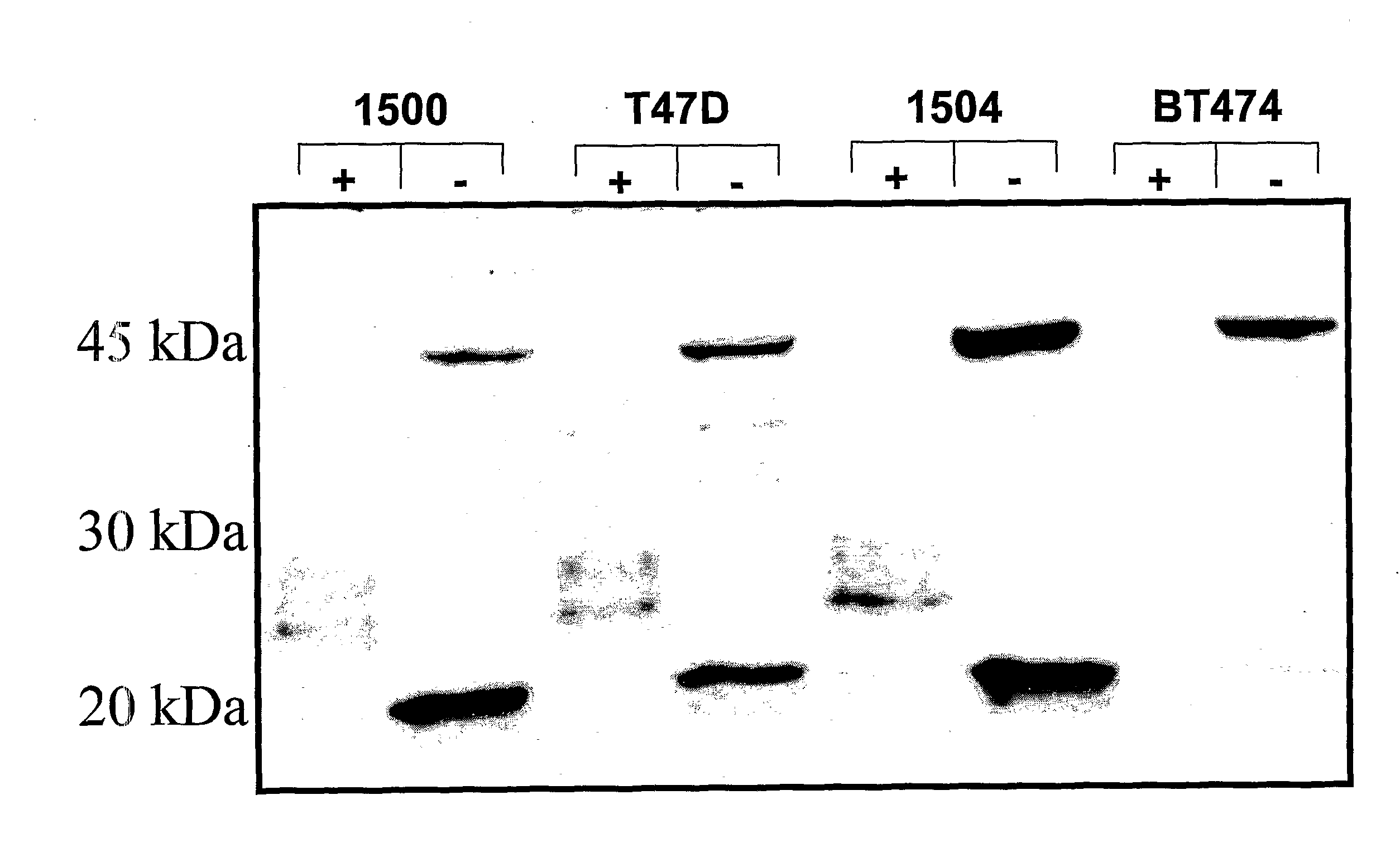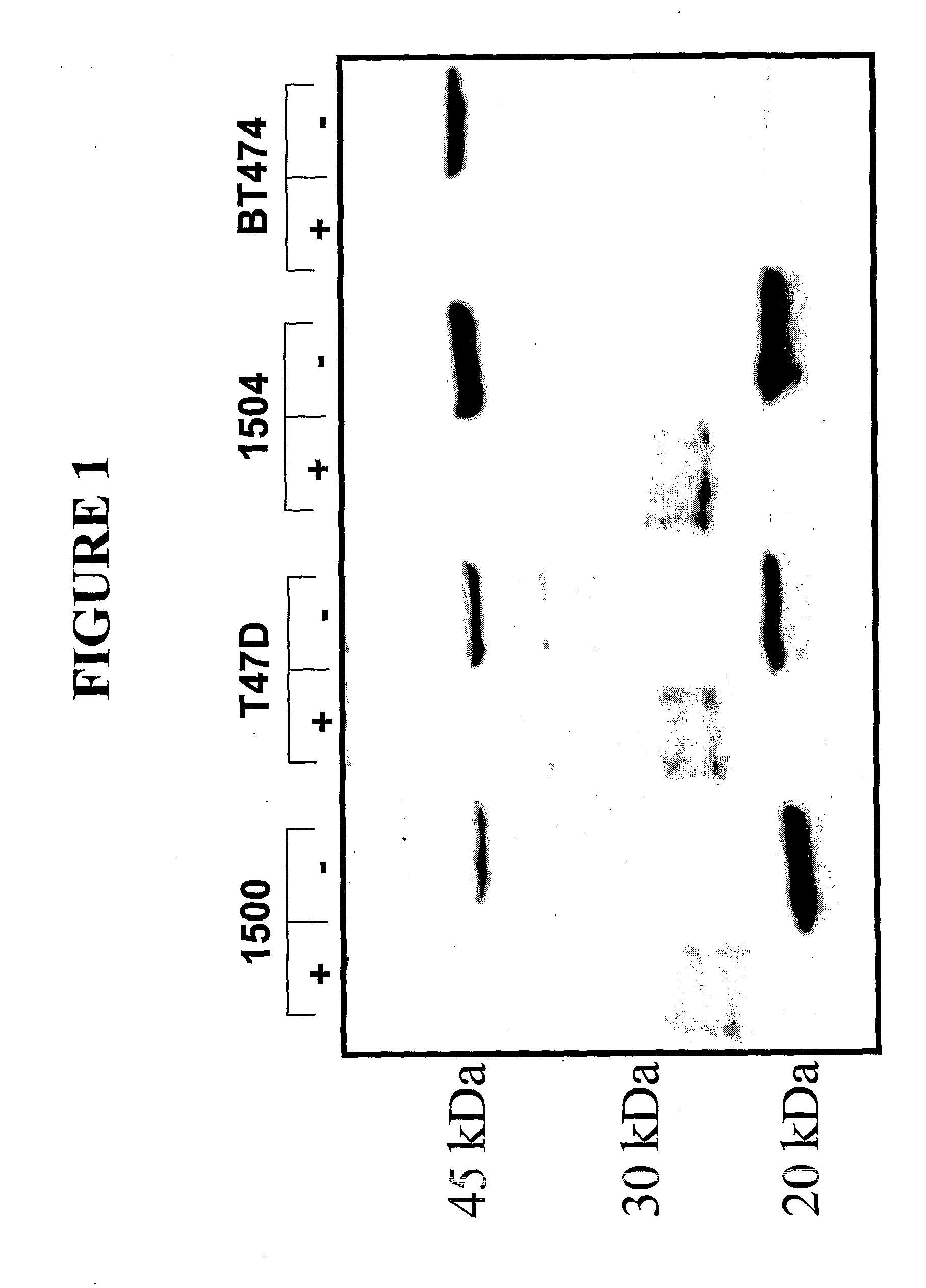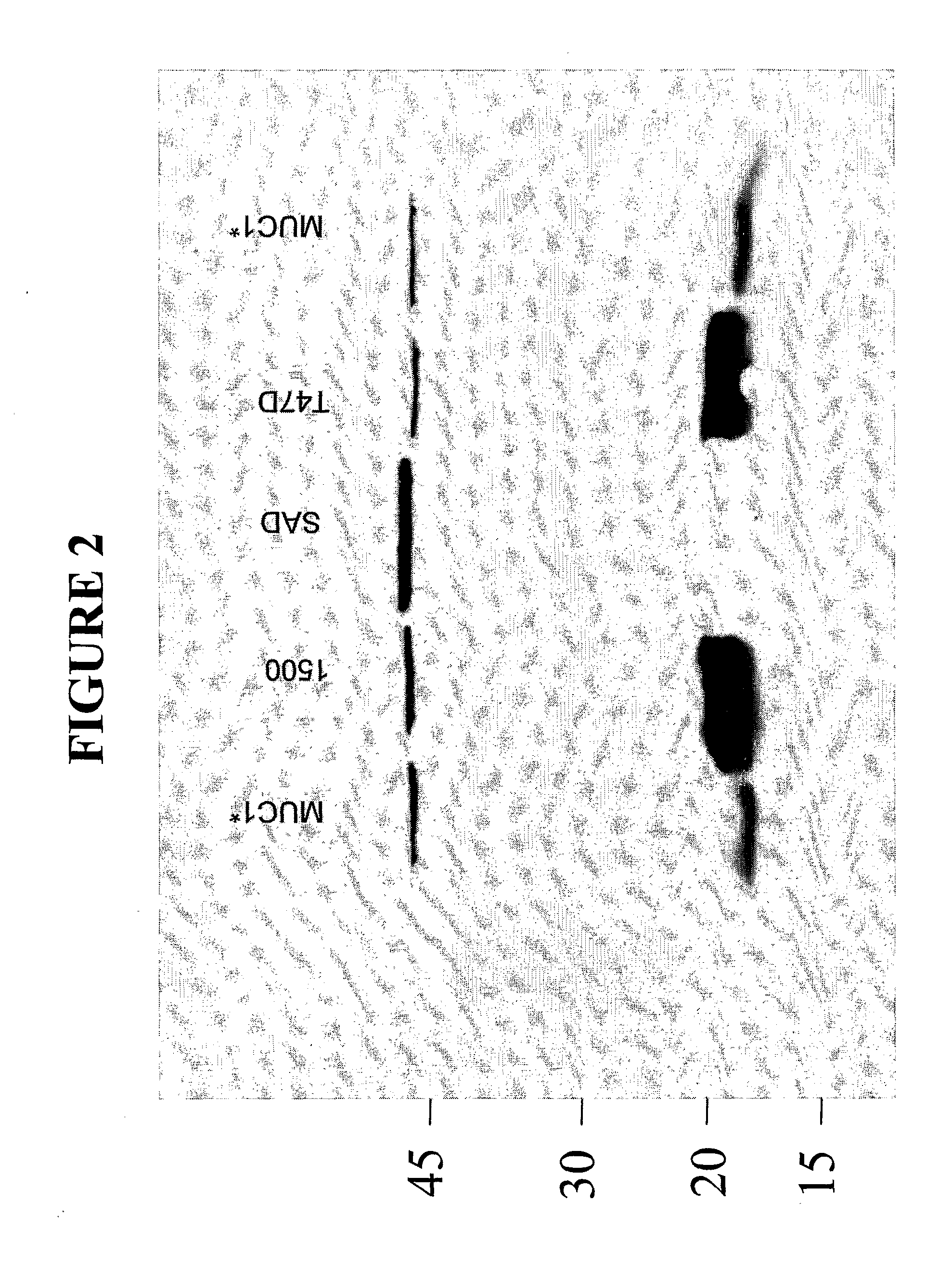Methods for Diagnosis and Treatment of Cancer
a cancer and cancer technology, applied in the field of cancer diagnosis and treatment, can solve the problems of limiting the utility of tracking the response of patients to therapy, and affecting the treatment effect of patients
- Summary
- Abstract
- Description
- Claims
- Application Information
AI Technical Summary
Benefits of technology
Problems solved by technology
Method used
Image
Examples
example 1
[0214]A tumor from a patient suspected of having cancer is biopsied. The tissue specimen is assessed using the standard methods known to those skilled in the art to enable an assessment of whether or not the specimen is cancerous. The tissue specimen is then characterized as to whether it is a MUC1-positive or negative cancer using methods of the invention. The patient is diagnosed as having a MUC1-positive cancer. The physician prescribes a treatment that includes an agent(s) that inhibits MUC1. Preferred treatments are with agents that bind to the MGFR portion of the MUC1 receptor and / or inhibit its cleavage. Especially preferred are compounds disclosed in Tables 2-5, and in particular, compound numbers 28, 118, 107, 109, 125, 173, 182, 184, 185, and 188.
example 2
Antibody Production
[0215]This example demonstrates that antibodies raised against the MGFR region of the MUC1 receptor, specifically bind to the form of the MUC1 receptor that is predominantly expressed on cancer cells. In this example it is shown that inventive antibodies raised against the MGFR bind to a MUC1 species that is expressed on cancer cells, wherein virtually all of the tandem repeat units have been cleaved and shed from the cell surface leaving the MGFR attached to the cell surface. Inventive antibodies were raised against the PSMGFR portion of the MUC1 receptor, in particular nat-PSMGFR or var-PSMGFR shown in Table 1 using standard methods of antibody production. Rabbit polyclonal antibodies were produced and purified by column chromatography in which the immunizing peptide was attached to the chromatography column beads. The antibodies, anti-nat-PSMGFR and anti-var-PSMGFR, were shown to specifically and sensitively bind to the immunizing peptide, MUC1 extracted from t...
example 3
MUC1-Positive Breast Cancers
[0216]Formalin fixed, paraffin embedded anonymous tissue specimens were separately tested for reactivity to two antibodies that recognize different epitopes on the MUC1 receptor: 1) a rabbit polyclonal antibody, anti-PSMGFR, that binds to the PSMGFR portion of the MUC1 receptor that remains attached to the cell surface after receptor shedding; and 2) a commercially available mouse monoclonal, VU4H5 (Santa Cruz) that binds to a sequence in the tandem repeat section of the receptor. Both antibodies were at 1 ug / ml. Protocols and treatments that the specimens were subjected to were identical for both antibodies. Contiguous sections from the same tissue specimen block were separately probed with either VU4H5 or anti-PSMGFR so that nearly identical sections were compared. As controls, like specimens were also probed with irrelevant mouse and rabbit antibodies. One section from each block was stained with hemotoxin and eosin (H&E) to aid in assessing tumor grad...
PUM
| Property | Measurement | Unit |
|---|---|---|
| temperature | aaaaa | aaaaa |
| chemical stability | aaaaa | aaaaa |
| structure | aaaaa | aaaaa |
Abstract
Description
Claims
Application Information
 Login to View More
Login to View More - R&D
- Intellectual Property
- Life Sciences
- Materials
- Tech Scout
- Unparalleled Data Quality
- Higher Quality Content
- 60% Fewer Hallucinations
Browse by: Latest US Patents, China's latest patents, Technical Efficacy Thesaurus, Application Domain, Technology Topic, Popular Technical Reports.
© 2025 PatSnap. All rights reserved.Legal|Privacy policy|Modern Slavery Act Transparency Statement|Sitemap|About US| Contact US: help@patsnap.com



